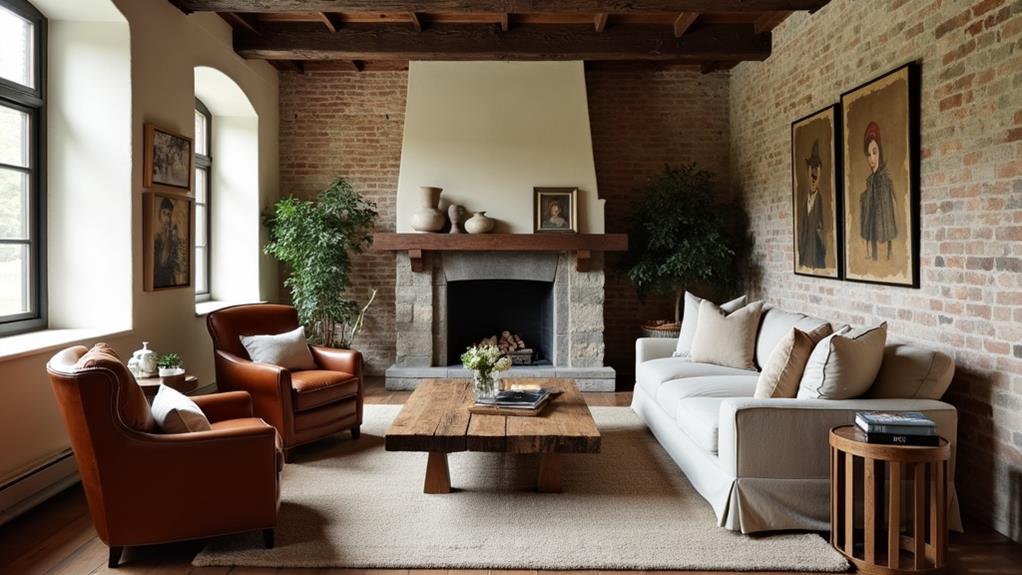Transforming your home with rustic elegance involves blending the cozy charm of country living with modern sophistication. Start by incorporating natural materials like wood, stone, and metal; these materials add texture and depth, creating a warm ambiance. Choose a neutral color palette, including soft grays, beiges, and creams, balanced with muted earth tones such as sage and deep green, which convey tranquility. Opt for open spaces to encourage fluid movement and cohesion between indoor and outdoor areas. Enhance your interiors with layered lighting and textures like wool throws or reclaimed wood. Explore how these elements can establish a refined rustic atmosphere.
Table of Contents
ToggleEmbracing Contemporary Rustic Style
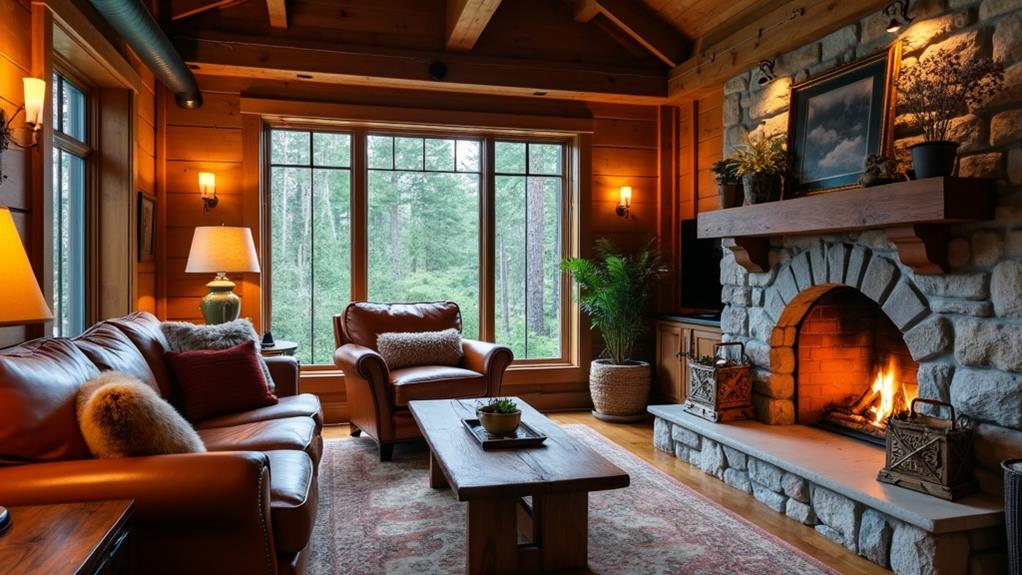
When you embrace contemporary rustic style, you're blending the cozy charm of country living with the sleek simplicity of modern design.
This style highlights natural materials like wood, stone, and metal, emphasizing organic forms that bring a sense of authenticity to your space. The use of raw, unrefined materials adds texture and depth, creating an inviting environment that feels both grounded and sophisticated.
Furniture pieces typically feature clean lines, merging traditional craftsmanship with modern aesthetics. By incorporating elements such as exposed beams or reclaimed wood, you establish a connection to nature, enhancing the overall ambiance.
This style also embraces open spaces, allowing for fluid movement and a seamless shift between indoor and outdoor areas, fostering a harmonious living experience.
Choosing the Right Color Palette
Selecting the right color palette is essential in achieving the perfect contemporary rustic style, as it sets the foundation for your space's mood and character.
To capture this aesthetic, focus on colors that evoke a sense of calm and natural beauty. Neutral tones, such as soft grays, beiges, and creams, provide a versatile backdrop that complements rustic materials like wood and stone.
Emphasize colors inspired by nature, as they enhance the organic feel of your space. Consider incorporating muted hues that mirror the subtle shades found in rural landscapes.
These colors create a cohesive and harmonious atmosphere, reflecting a balance between traditional charm and modern refinement. Choose tones that tell a story of authenticity, establishing a serene and inviting environment.
Integrating Earth Tones in Design
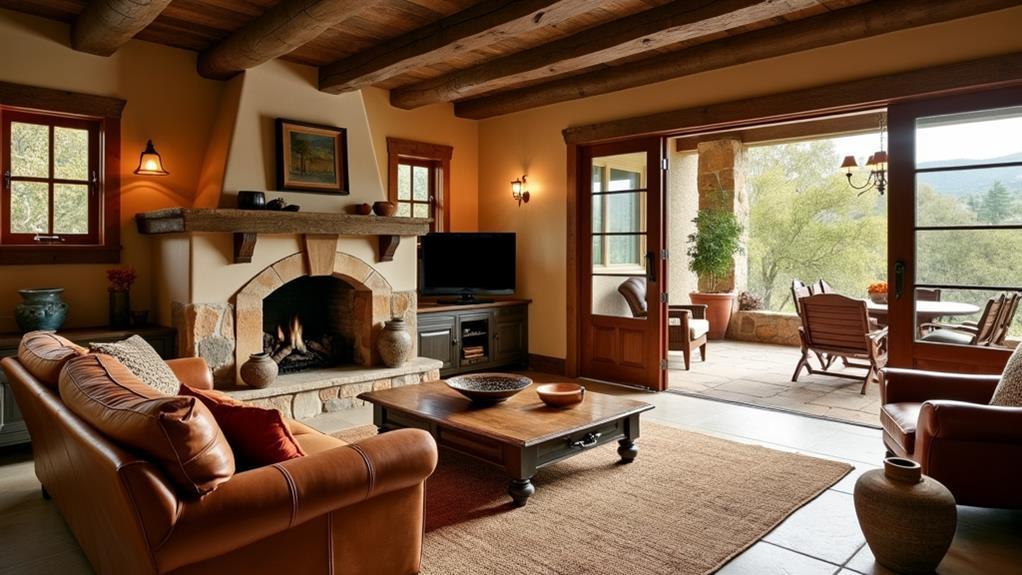
Building on the foundation of a carefully chosen color palette, integrating earth tones into your design invites nature's tranquility and warmth into your space.
By selecting hues like muted sage, soft sand, terracotta, and deep forest green, you establish a soothing backdrop that enhances the rustic aesthetic. These colors, inspired by nature, evoke stability and comfort, harmonizing seamlessly with wood, stone, and metal elements.
Strategic use of earth tones facilitates a smooth shift from outdoor to indoor environments, reinforcing a connection with nature. Balance between warm and cool tones is essential, ensuring harmony and visual interest.
Creating Warm and Inviting Spaces
Creating warm and inviting spaces in your home begins with a thoughtful approach to design elements that foster comfort and coziness.
Start by selecting furniture pieces that balance functionality with aesthetics. Opt for natural materials like wood and stone, which inherently emit warmth and grounding qualities.
Incorporate textiles such as wool throws, cotton cushions, and woven rugs to enhance tactile experiences, adding depth and texture.
Choose a neutral color palette with earth tones to create a harmonious backdrop that complements rustic elements.
Arrange your furniture to facilitate conversation and intimacy, ensuring pathways remain uncluttered.
Utilize art and decor strategically, opting for items that resonate with your personal style while maintaining cohesion with the overall rustic theme.
Thoughtful arrangement and selection can transform spaces into cozy retreats.
Enhancing Interiors With Lighting
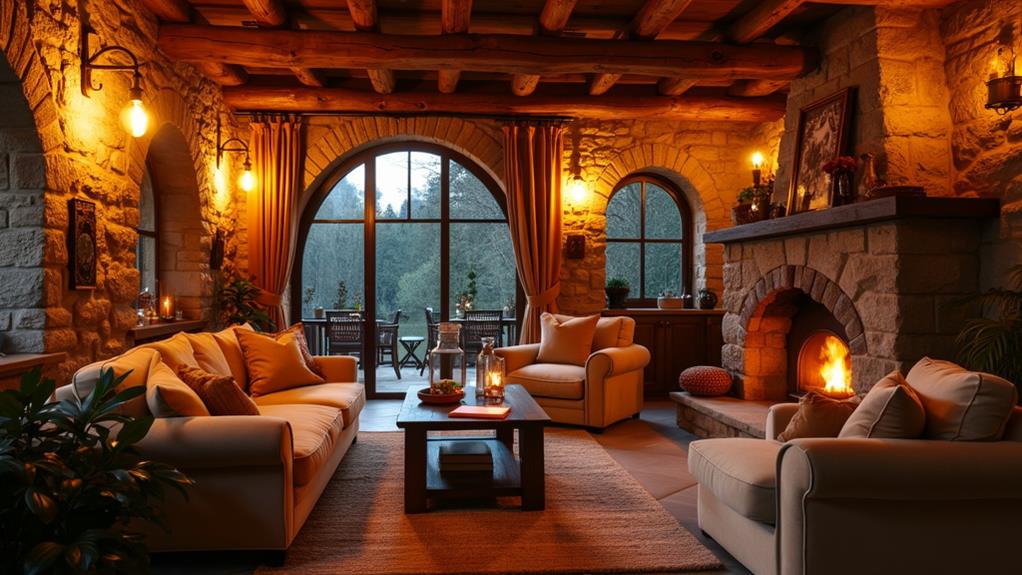
Lighting plays a pivotal role in transforming rustic interiors into warm and inviting havens. By carefully selecting and positioning various light sources, you can enhance the natural beauty of rustic elements.
Start with ambient lighting to establish a consistent glow throughout the room, using fixtures like chandeliers or pendant lights crafted from natural materials. Layer this with task lighting, such as table lamps or directional spotlights, to highlight specific features like stone walls or wooden beams.
Accent lighting, such as LED strips under shelves, adds depth and dimension. Opt for bulbs that emit a warm, soft glow, harmonizing with earthy tones.
Adding Texture for Depth
Textures play an essential role in crafting the depth and warmth characteristic of rustic interiors. By focusing on varied materials, you can transform spaces into inviting and sophisticated environments.
Consider incorporating these elements:
- Wood: Utilize reclaimed wood for flooring or accent walls, highlighting its natural grain and weathered patina for a genuine rustic feel.
- Stone: Add a natural stone fireplace or backsplash to introduce rugged texture, enhancing the rustic ambiance.
- Fabrics: Mix materials like linen and wool in cushions or throws, offering both visual and tactile diversity.
- Metal: Integrate wrought iron or aged brass fixtures to contrast with softer materials, adding an industrial edge.
These textures, when layered thoughtfully, create depth and intrigue, inviting exploration and engagement within your rustic home.
Bringing Nature Indoors
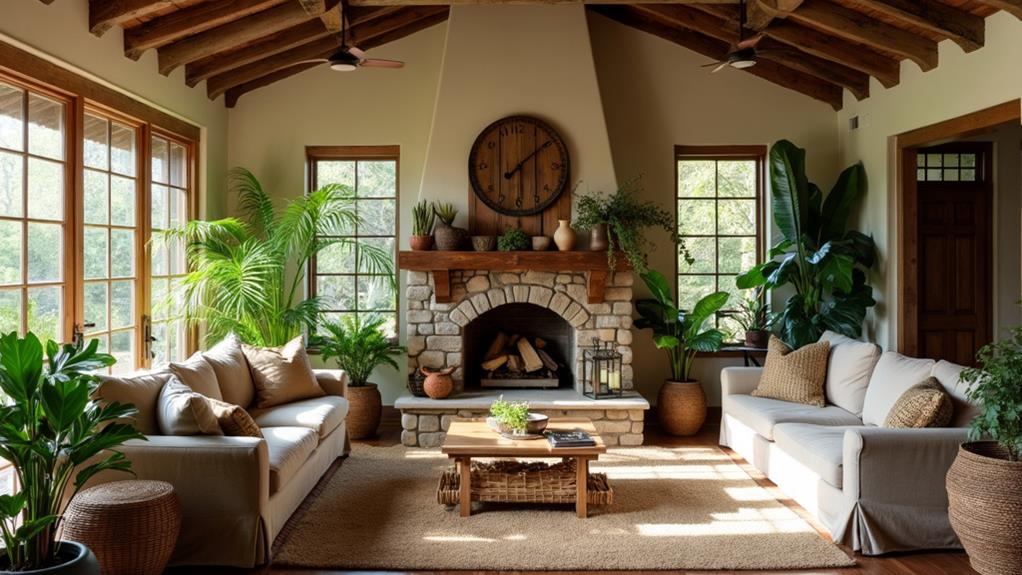
Infusing indoor spaces with elements from nature enriches rustic interiors, bridging the gap between the comfort of home and the tranquility of the outdoors.
To achieve this, incorporate natural materials like wood, stone, and metal, which add texture and warmth. Introduce plants in various sizes to enhance air quality and visual interest, creating a serene environment.
Consider using earthy hues such as deep greens and muted browns to complement plant life and establish a cohesive theme. Natural light plays an essential role, so maximize it by choosing window treatments that allow sunlight to fill the room.
Strategic placement of mirrors can amplify light and create an illusion of spaciousness. Together, these elements craft a harmonious rustic atmosphere indoors.

